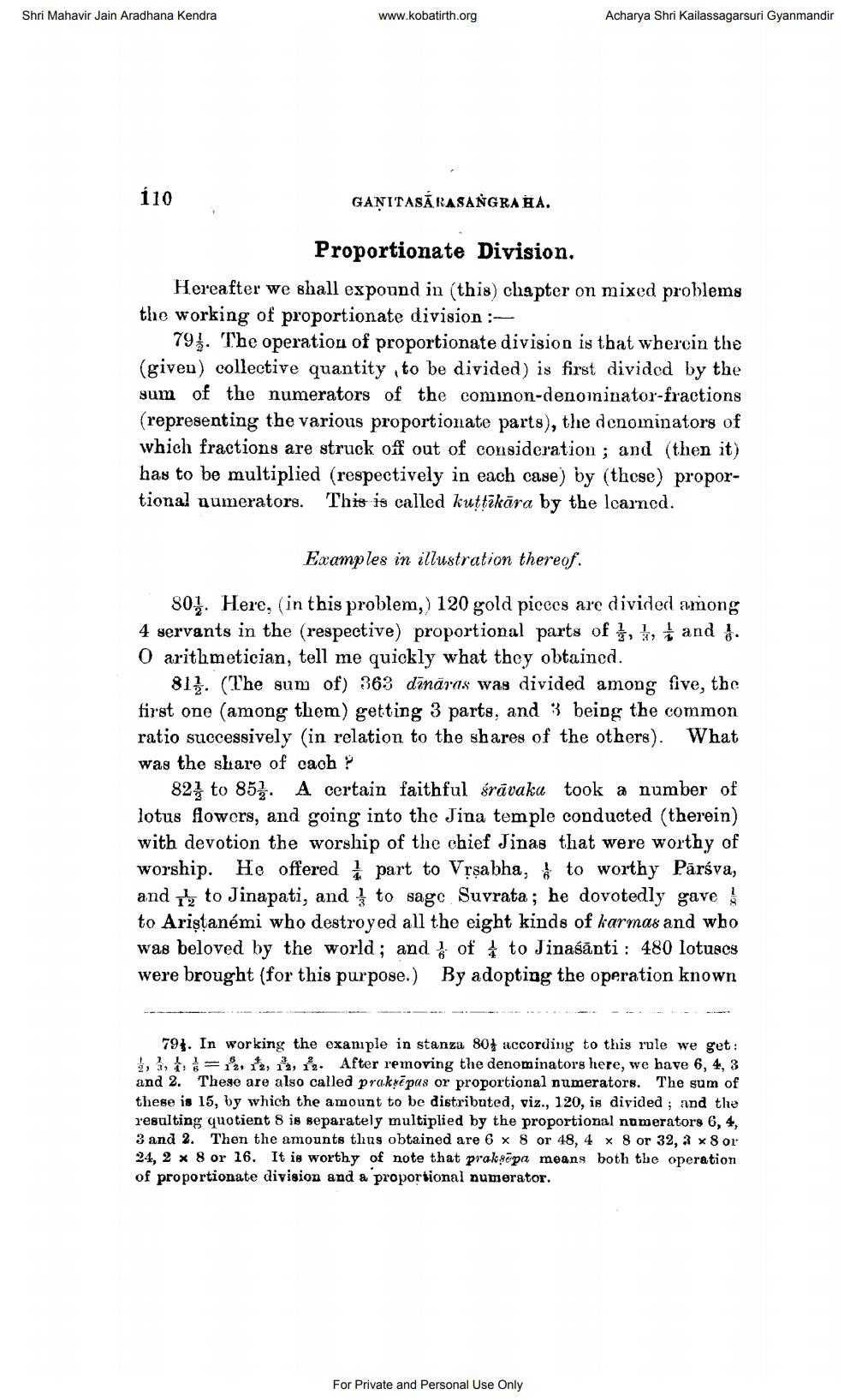________________
Shri Mahavir Jain Aradhana Kendra
www.kobatirth.org
Acharya Shri Kailassagarsuri Gyanmandir
110
GANITASÁRASANGRAHA.
Proportionate Division, Hereafter we shall expound in this chapter on mixed problems the working of proportionate division :
79. The operation of proportionate division is that wherein the (given) collective quantity , to be divided) is first divided by the sum of the numerators of the cominon-denoininator-fractions (representing the various proportionate parts), the denominators of which fractions are struck off out of consideration ; and (then it) has to be multiplied (respectively in each case) by (these) proportional numerators. This is called kuttikära by the learned.
Examples in illustration thereof.
801. Here, (in this problem,) 120 gold picces are divided among 4 servants in the (respective) proportional parts of , and a. 0 arithmetician, tell me quickly what they obtained
811. (The sum of) 363 dināras was divided among five, the first one (among them) getting 3 parts, and 3 being the common ratio successively (in relation to the shares of the others). What was the share of cach?
821 to 85). A certain faithful srāvaka took a number of lotus flowers, and going into the Jina temple conducted (therein) with devotion the worship of the chief Jinas that were worthy of worship. He offered 1 part to Vrsabha, to worthy Pārsva, and to Jinapati, and ļ to sage Suvrata; he dovotedly gave to Aristanémi who destroyed all the eight kinds of karmas and who was beloved by the world ; and of I to Jinaśānti : 480 lotuscs were brought (for this purpose.) By adopting the operation known
79. In working the exanıple in stanza 80+ according to this rule we get: %, 3, E12, 12, in, 12. After removing the denominators here, we have 6, 4, 3 and 2. These are also called praksēpus or proportional numerators. The sum of these is 15, by which the amount to be distributed, viz., 120, is divided ; and the resulting quotient 8 is separately multiplied by the proportional numerators 6, 4, 3 and 2. Then the amounts thus obtained are 6 x 8 or 48, 4 x 8 or 32, 3 x 8 or 24,2 x 8 or 16. It is worthy of note that praksēpa means both the operation of proportionate division and a proportional numerator,
For Private and Personal Use Only




